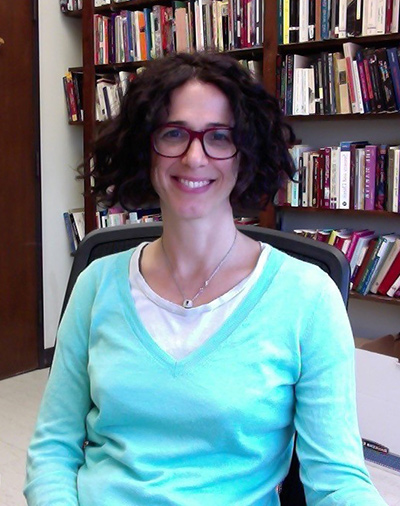 The legal profession’s loss was history’s gain. When Professor Flora Cassen went to college in Belgium, she entered the law school program. But it did not take long before she fell in love with her history courses and made the transition. After writing her senior thesis on attacks against the Jews during the Crusades, Cassen realized that she thoroughly enjoyed doing research, writing about history, and thinking about historical questions. This took her to Brandeis for her MA and to NYU for her PhD. While at Brandeis, Cassen encountered the historical questions that would be central to her forthcoming book Marking the Jews in Renaissance Italy: Politics, Religion, and the Power of Symbols (Cambridge University Press, Fall 2017).
The legal profession’s loss was history’s gain. When Professor Flora Cassen went to college in Belgium, she entered the law school program. But it did not take long before she fell in love with her history courses and made the transition. After writing her senior thesis on attacks against the Jews during the Crusades, Cassen realized that she thoroughly enjoyed doing research, writing about history, and thinking about historical questions. This took her to Brandeis for her MA and to NYU for her PhD. While at Brandeis, Cassen encountered the historical questions that would be central to her forthcoming book Marking the Jews in Renaissance Italy: Politics, Religion, and the Power of Symbols (Cambridge University Press, Fall 2017).
After reading an article on yellow badges and hats in Venice, Cassen was inspired to pursue research in Jewish Studies on symbols and marking. Rather than working on Venice or another major urban center, Cassen concentrated her attention on the northwestern peninsula of Italy. This decision proved fruitful for two reasons. There was an incredible amount of material about Jews and badges in the archives. Furthermore, Cassen recognized, “the kind of Jewish society that I found was very different from Venice, Florence, or Rome which were the communities that had the most history written about them and were the best known.” Rather than Jewish communities attempting to solve problems together, Cassen encountered a family here, a family there, in which she saw individuals trying to deal with diverse situations.
When asked how she would give an elevator pitch about her forthcoming book, Cassen light heartedly asked, “Can it be a high building?” Joking aside, Marking the Jews in Renaissance Italy is a compelling account of discrimination and resistance. It is a study of the Jewish badge in the northwestern corner of Italy during the 15th and 16th centuries. Cassen explained, “At regular intervals during those two centuries authorities tried to force Jews to wear a yellow badge,” and, later on, a yellow hat. Her book tries to untangle administrative motivations, Jewish responses, and importantly, what it tells us about Jewish life and Jewish-Christian relations in those areas at the time.
Cassen grappled with concepts of race and discrimination in writing the book. While she acknowledges that there is a professional undercurrent that resists talking about race in the premodern era, she insists “If there’s one group that was treated as a different race without being one, it was the Jews.” By the 15th century, Cassen argues, Jews were seen as radically different to an extent that was not bridgeable through conversion. “So what I argue is that it [marking] is an attempt to fully and completely define Jews as such, as utterly and radically different. Literally in their blood in a way that cannot change or improve. And then I also argue that Jews understood that.”
Becoming marked by signs and symbols contributed to the process of racializing Jews, Cassen argues. At the heart of Marking the Jews in Renaissance Italy is a reflection on the connection between antisemitism and racism. “Race is something that at least today is defined as a physical feature, whereas religion is something you choose. I’m showing that it’s not always so obvious.” There was an attempt to define Jews as a culture, as a people, and as a religion, “as radically and indelibly different from Christians.” However, by excavating the history of that process, Cassen goes on to argue that eventually it did not work because the authorities were unable to make the badges permanent. “Even though it was an attempt to indelibly mark the Jews as different,” Cassen said, “because of the resourcefulness of Jewish communities and the many overlapping powers and conflicts between them, it never fully succeeded.”
Cassen would like readers to come away understanding “how members of small, minority communities can live and negotiate a kind of life even in difficult circumstances.” “It’s not perfect,” she argues, “but they figure out a way.” Lastly, Cassen is hopeful that her book will encourage people to reflect “on what it means when groups of people are in some ways identified and defined by other groups in a negative way and how that works. And the possible consequences of that.”
–Danielle Balderas
